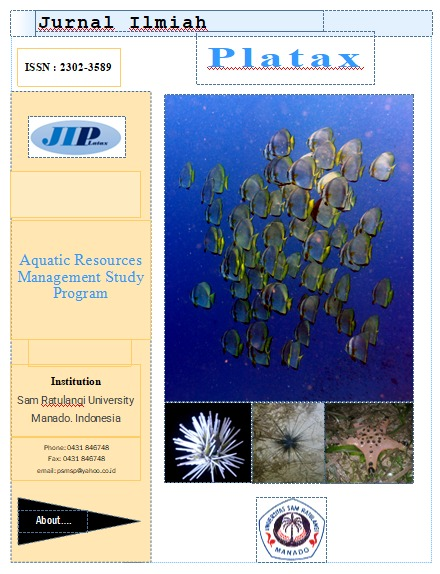B3 Waste Management at PT Kereta Api Indonesia: a Literature Review
DOI:
https://doi.org/10.35800/jip.v12i2.53179Keywords:
waste management, PT Kereta Api Indonesia, hazardous waste, railwayAbstract
The amount of B3 waste sourced from the Locomotive Depot, Station, and Balai Yasa office of PT Kereta Api Indonesia (Persero) which is not managed properly and correctly will cause problems later both for the surrounding environment, passengers, and water quality that is close to the location of the waste source. This study aims to determine the management of B3 Waste carried out at all PT Kereta Api Indonesia stations. This type of research is research using the literature review method. The stages of literature collection used in this study refer to the Preferred Reporting Items for Systematic Review and Meta-Analysis (PRISMA) guidelines. This stage has four procedures: identification, screening, eligibility, and acceptance. This study shows that the management of hazardous waste at several stations from the articles that have been reviewed is found to be inconsistent with the workmanship and management based on applicable regulations. It can be concluded that hazardous waste at some of these stations does not meet the grouping, storage, and management requirements.
References
PT Kereta Api Indonesia (Persero). (2022). Sustainability Report. Annual and Sustainability Report, 42.
Barbara Kitchenham. (2014). Procedures for Performing Systematic Reviews. Keele University Technical Report, 33(2004), 1-26.
Birullah, M. Y. (2019). Hazardous and Toxic Waste Management Planning at Lempuyangan and Tugu Stations Yogyakarta. Thesis. Islamic University of Indonesia.
Campbell M, Je, M., Sowden A, Sv, K., Se, B., Ellis S, Hartmann-Boyce J, Ryan R, Shepperd S, Thomas J, Welch V, & Thomson H. (2020). Synthesis Without Meta-analysis (SWiM) reporting items. http://dx.doi.org/10.1136/bmj.l6890
Deviyanti, E., & Prasasti, C. I. (2015). Sanitation of Pasundan Economic Train and Passengers' Health Complaints. Environmental Health, 1(1), 13-24. http://journal.unair.ac.id/download- fullpapers- pkl62a304f1c22full.pdf
Fauzi, M. A. (2019). Waste Management Planning at Lempuyangan Station and Tugu Station Yogyakarta.https://dspace.uii.ac.id/handle/123456789/16845%0Ahttps://dspace.uii.ac.id/bitstream/ha ndle/123456789/16845/05.4chapter 4.pdf?sequence=7&isAllowed=y
HAKIM, L. (2017). Planning for Integrated Management of Railway Wastewater at Surabaya City Station. [Institut Teknologi Sepuluh Nopember. http://repository.its.ac.id/3240/
Liberati, A., Moher, D., Tetzlaff, J., Altman, D. G., & Group, T. P. (2009). Preferred Reporting Items for Systematic Reviews and Meta-Analyses: The PRISMA Statement. PLoS Medicine, 6(7), 1-6. https://doi.org/10.1371/journal.pmed.1000097
Sakti, F. B. (2022). Waste Management at the South Sumatra LRT Depot. Politeknik Transportasi Darat Indonesia-STTD.
Wardani, Y. P. (2021). Hazardous and Toxic Waste Management at PT Kereta Api Indonesia Daop 7 Madiun. College of Vocational Studies, 1-7.
Wicaksono, Putut Jati Nugrahayu, Q., & Iresha, F. M. (2018). Management Planning of Specific Solid Waste Management of Balai Yasa PT Kereta Api Indonesia D.I Yogyakarta. Environmental Engineering, Faculty of Civil Engineering and Planning, Universitas Islam Indonesia, 1-10.
Downloads
Published
How to Cite
License
Copyright (c) 2024 Dewi Fortuna Khairil Dewi, Abdul Razak, Linda Handayuni, Elsa Yuniarti

This work is licensed under a Creative Commons Attribution-NonCommercial 4.0 International License.
COPYRIGHT
Authors who publish with this journal agree to the following terms:
Authors hold their copyright and grant this journal the privilege of first publication, with the work simultaneously licensed under a Creative Commons Attribution License that permits others to impart the work with an acknowledgment of the work's origin and initial publication by this journal.
Authors can enter into separate or additional contractual arrangements for the non-exclusive distribution of the journal's published version of the work (for example, post it to an institutional repository or publish it in a book), with an acknowledgment of its underlying publication in this journal.
Authors are permitted and encouraged to post their work online (for example, in institutional repositories or on their website) as it can lead to productive exchanges, as well as earlier and greater citation of the published work (See The Effect of Open Access).




















